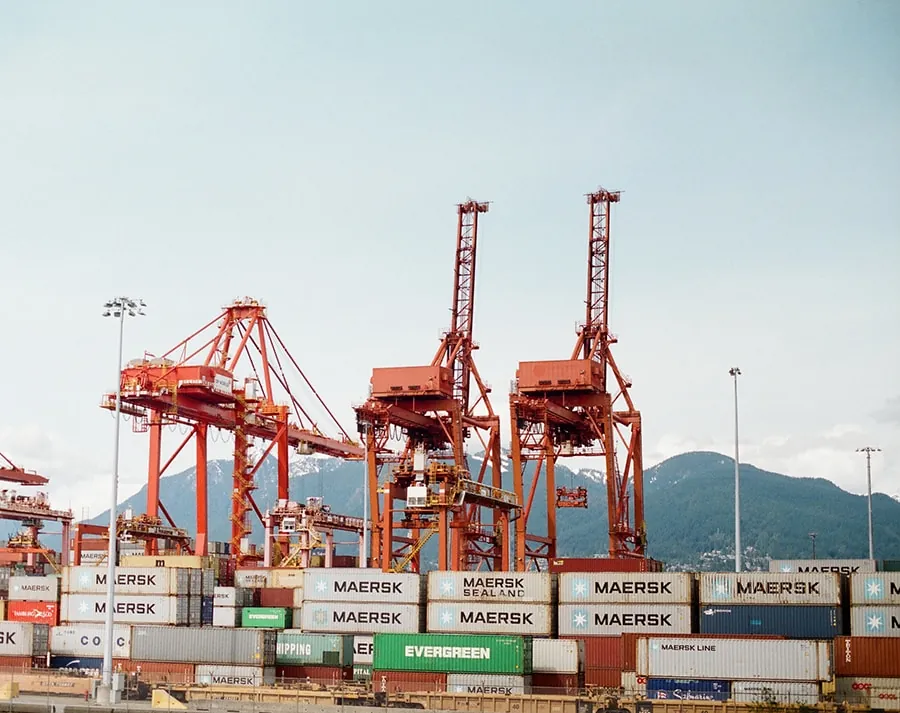Managing municipal assets is not easy. Ageing infrastructure, tight budgets, and growing expectations for transparency make it even more challenging. Without the right tools, it becomes difficult to keep up with maintenance, plan for the future, or use resources wisely. Outdated technology often creates more problems than it solves. When maintenance is only done reactively, costs pile up, and issues escalate before they can be addressed.
This is where geospatial information comes in. With infrastructure getting older and regulations becoming stricter, organizations that rely on fixed assets are turning to geospatial data to improve performance. It provides a clearer picture of assets across different locations and conditions, making it easier to track, maintain, and plan upgrades.
A Geographic Information System (GIS) takes this a step further. It helps municipalities manage assets in a way that is more organized and efficient. By using advanced mapping technology, municipalities can improve decision-making, reduce waste, and enhance service delivery. Instead of reacting to problems as they arise, GIS allows for a more proactive approach, ensuring resources are used where they are needed most.
What Is GIS Asset Management?
GIS asset management is all about using mapping technology to keep track of physical assets in a city or town. Roads, bridges, water systems, and public buildings are all part of this system. Instead of managing these assets separately, GIS brings everything together on a map, making it easier to see where things are, what condition they are in, and how they are performing over time.
By combining spatial data with asset management, municipalities get a complete picture of their infrastructure. This helps with planning and decision-making, making it possible to prevent problems before they turn into bigger issues. Instead of reacting to damage or breakdowns, cities can take a proactive approach and fix things before they fail.
Using GIS in asset management also helps eliminate ghost resources—assets that exist on paper but not in reality. A well-organized system ensures that every facility and resource is accounted for. When decision-makers have easy access to accurate data from the start, they can maintain infrastructure properly and improve efficiency in the long run.
Best Assets for Geospatial Asset Management
When managing assets using geospatial technology, certain types of assets are more suitable for tracking, mapping, and analysis. If you’re looking to get the most out of geospatial asset management, here’s what you should focus on:
-
Infrastructure Assets
This includes roads, bridges, tunnels, and other large structures that need regular monitoring. With geospatial tools, it’s easier to check for damage, track maintenance work, and plan repairs before small issues turn into major problems. It also helps in planning new infrastructure by analyzing existing layouts and traffic patterns.
-
Machinery and Equipment
Large machines, industrial tools, and construction equipment can be tracked in real time. This helps in managing their usage, scheduling maintenance, and ensuring they are being used in the right locations. Instead of manually keeping track, geospatial technology gives a clear picture of where each piece of equipment is and how often it’s being used.
-
Buildings
Offices, warehouses, and residential complexes are important assets that need regular upkeep. Geospatial tools help in monitoring their condition, optimizing space, and planning renovations. This is especially useful for large campuses, industrial sites, and city planning, where knowing the exact location and status of each building makes management much easier.
-
Utility Lines
Electricity, water, gas, and communication lines run across huge areas, making them difficult to monitor manually. With geospatial mapping, it’s easier to spot leaks, detect faults, and plan expansions. Utility companies can use this data to prevent breakdowns and ensure uninterrupted service.
-
Transportation Assets
This covers railways, airport runways, bus stops, and ferry terminals. Keeping track of these assets helps in planning routes, scheduling maintenance, and ensuring safety. With real-time mapping, transport systems can be managed better, reducing delays and improving service.
-
Landscaping Assets
Public parks, gardens, and green spaces need regular care to stay in good shape. Geospatial tools help track plant health, plan irrigation, and manage tree cover. This is useful for city planners, environmentalists, and landscaping teams who need to maintain these spaces efficiently.
-
Construction Projects
For buildings, roads, or other large projects, geospatial asset management provides a clear view of progress. It helps in tracking materials, checking site conditions, and making sure work is completed on time. By mapping the project in real-time, teams can coordinate better and avoid delays.
-
Natural Resources
Forests, lakes, rivers, and mineral-rich land need proper monitoring to prevent overuse and environmental damage. Geospatial tools help track changes over time, ensuring that these resources are managed responsibly. Whether it’s monitoring deforestation, tracking water levels, or managing conservation efforts, mapping plays a big role.
-
Personnel Assets
Field workers, emergency response teams, and contractors can be tracked in real-time using geospatial tools. This helps in improving safety, assigning tasks more efficiently, and making sure people are in the right locations when needed. It’s especially useful in large projects, where coordinating different teams can be a challenge.
-
Information Systems
Data centers, network hubs, and digital infrastructure also count as assets that need management. Geospatial mapping helps in planning their locations, ensuring smooth connectivity, and keeping systems secure. Businesses can use this data to make sure their IT infrastructure is well-organized and running without issues.
Where GIS is Used
GIS helps manage both underground and surface assets. When combined with barcoding or RFID tracking, it makes it easier to map locations and monitor asset conditions. This is why so many industries rely on it. Here’s where GIS plays a major role:
- Infrastructure Industries
- Facilities Management
- Utilities
- Energy Management
- Agriculture
- Natural Disaster Management
- Governments
The Role of GIS in Asset Management
Managing assets isn’t just about keeping track of where things are. It’s about understanding how they are being used, how they are performing, and how to organize them for better efficiency. This is where GIS (Geographic Information System) makes a big difference. It gives businesses a clear view of their assets, helping them monitor, analyze, and manage them in a smarter way.
Here’s how GIS supports asset management:
- Real-time Monitoring – GIS processes large amounts of data instantly, helping businesses see which assets need attention. Whether it’s tracking equipment, vehicles, or infrastructure, it gives a better idea of what’s happening in the field.
- Better Organization – Businesses can use GIS to create specific regions that show where assets are placed. This makes it easier to organize and allocate resources without relying on scattered records.
- Helps with Transport Assets – GIS automates mapping, which is useful for tracking vehicles, planning routes, and managing transport schedules.
- Smart Maps and Dashboards– GIS creates interactive maps and dashboards that give supervisors a full view of their assets. This helps in spotting any issues and making changes when needed.
- Finding Useful Patterns – GIS can compare different types of assets to find connections, common issues, and usage trends. This helps businesses improve how they manage their resources.
Benefits of Using GIS Asset Management
Here’s a closer look at some of the benefits GIS Asset Management offers:
-
Understanding Assets and Their Lifecycle
With GIS, you can see all your assets on a map and track their entire lifespan. This helps in planning maintenance, predicting when replacements will be needed, and making sure nothing is overlooked. Instead of dealing with unexpected failures, you can stay ahead by scheduling repairs and upgrades at the right time.
-
Making Field Inspections Faster and More Accurate
Field teams no longer have to rely on outdated spreadsheets or paper-based reports. GIS allows inspectors to access real-time data, update asset conditions on-site, and flag any issues immediately. This reduces manual work, minimizes errors, and ensures that inspections are done more efficiently.
-
Keeping Data Consistent and Reliable
One of the biggest challenges in asset management is maintaining accurate records. GIS helps by storing all asset information in a centralized system, reducing inconsistencies and errors. When data is updated in one place, it reflects across all platforms, making sure everyone has the most up-to-date information.
-
Providing Better Visibility and Transparency
Knowing exactly where assets are located and how they are performing allows for better decision-making. Whether it’s tracking roads, pipelines, power lines, or public infrastructure, GIS ensures that everything is documented and easily accessible. This transparency helps in planning, budgeting, and even complying with regulations.
-
Helping You Make Smarter Decisions
When all asset information is available in one place, it becomes easier to analyze patterns, detect inefficiencies, and make informed choices. GIS provides data-driven insights that help in budgeting, resource allocation, and long-term planning, ensuring that assets are used in the best possible way.
-
Understanding Risks, Costs, and Returns
Every asset comes with risks and costs, and GIS helps in managing both. By tracking maintenance history, weather conditions, and environmental factors, you can assess potential risks and take action before they become major problems. This helps in reducing unnecessary expenses while maximizing returns on investments.
-
Encouraging Better Collaboration and Communication
When multiple teams are responsible for managing assets, miscommunication can lead to costly mistakes. GIS creates a shared platform where everyone—from field workers to managers—can access the same information. This improves coordination, avoids duplication of work, and ensures that decisions are made based on accurate data.
-
Improving Safety and Security
Managing assets isn’t just about maintenance and performance—it’s also about safety. GIS helps in identifying hazards, planning emergency response strategies, and ensuring that safety measures are in place. Whether it’s monitoring structural stability, tracking hazardous materials, or improving disaster preparedness, GIS plays a big role in keeping assets and people safe.
-
Using Resources More Efficiently
With GIS, you can optimize how resources are allocated. Whether it’s manpower, materials, or time, the system helps in distributing them where they are needed the most. This prevents wastage, improves productivity, and ensures that every asset is managed properly without unnecessary expenses.
-
Supporting Sustainability and Environmental Responsibility
Sustainable asset management is becoming more important, and GIS helps in making environmentally conscious decisions. By tracking energy usage, monitoring environmental impact, and planning eco-friendly infrastructure, organizations can reduce their carbon footprint and comply with sustainability goals.
Integrating GIS with Asset Management
Bringing GIS and asset management together helps organizations track, update, and analyze their assets more efficiently. There are different ways to do this, each with its own advantages.
-
Synchronizing GIS with Asset Management
One way to integrate GIS with asset management is by keeping the two systems separate but connected. Your asset management software works on its own, while GIS stores location-based data. Both systems communicate, ensuring that any changes in one reflect in the other.
This setup works well for companies that may not have advanced GIS tools but still want to use asset management software. It allows flexibility, ensuring that even without modern web maps, the system remains functional.
-
Using GIS as the Asset Repository
In this approach, GIS becomes the single source of truth. Instead of maintaining separate records, all asset details—like pipeline sizes or hydrant colors—are stored directly in the GIS. This removes the need for synchronization, as data updates happen in real time.
The best asset management systems support direct updates within GIS using Esri authentication. This means you can access and modify asset details straight from the management system without needing extra steps.
-
Using Esri Apps for Asset Management
Esri offers its own set of tools for asset tracking. Workforce, Survey123, and Dashboards can be customized to manage assets directly within GIS. These apps help track work, collect field data, and analyze asset conditions without requiring third-party software.
Each method offers a way to improve asset tracking while making GIS a valuable part of the management process. The right choice depends on how an organization wants to handle its data and systems.
The Future of Geospatial Asset Management
Geospatial Asset Management is shaping how industries manage everything from utility networks to transportation systems. Looking ahead, several trends are set to change how assets are monitored and maintained.
-
Technology is Getting Smarter
Expect to see AI and machine learning playing a bigger role in analyzing and managing assets. These technologies will automate data processing, making it easier to track changes, predict maintenance needs, and optimize resources. The shift toward automation means less manual work and faster, more precise decision-making.
-
Better Integration and Visualization
Handling large amounts of geospatial data can be overwhelming. Upcoming improvements in integration and visualization tools will help simplify this process. The ability to combine different datasets and present them in an easy-to-understand format will allow organizations to act on insights more quickly and efficiently.
-
Moving Away from Rigid Systems
Flexibility is becoming a priority. Relying on outdated systems limits progress, and the industry is shifting toward more adaptable solutions. The focus is on making infrastructure and services not just safer but also more resilient and sustainable. Upgrading to smarter, more flexible platforms will be essential for long-term success.
-
Using Data for Better Communities
Urban planning, land management, and environmental protection are seeing major benefits from advanced geospatial software. Property management databases and real-time monitoring tools are helping create more livable and sustainable communities. Data-driven analysis will play a major role in tracking environmental changes, planning smarter cities, and ensuring resources are used responsibly.
-
A More Connected Global Network
The future of Geospatial Asset Management includes building an interactive space for collaboration. Industry summits and global platforms will bring together experts, businesses, and policymakers to exchange ideas and drive innovation. These connections will help organizations stay ahead and prepare for a more sustainable future.
Powerful GIS Integration with NEXGEN and Esri ArcGIS
If you use Esri ArcGIS, NEXGEN makes it even more useful by bringing asset management and GIS together in one seamless system. This integration helps you see asset data on a map, making it easier to understand, analyze, and act on. Whether you’re tracking assets, managing maintenance, or planning infrastructure improvements, the combination of NEXGEN and Esri ArcGIS gives you the tools to make smarter decisions.
-
Better Asset Location and Mapping
Finding and managing assets becomes much easier when they are displayed visually on a map. Instead of sorting through lists or spreadsheets, you can see exactly where each asset is located, how it relates to surrounding infrastructure, and what condition it’s in. This makes it simple to plan inspections, schedule preventive maintenance, and respond to issues quickly.
-
Work Order and Inspections Management
With GIS data linked directly to work orders and inspections, teams can access all the information they need in one place. If an asset needs repairs, the location, maintenance history, and related data are immediately available. This helps streamline workflows, reduce downtime, and ensure that field teams have the details they need before they even arrive on-site.
-
Stronger Infrastructure Planning and Risk Management
Using GIS-driven insights, organizations can identify potential risks, plan for future challenges, and improve infrastructure resilience. Whether it’s predicting wear and tear on assets, preparing for natural disasters, or optimizing resource allocation, spatial analysis helps decision-makers take a more proactive approach. Instead of reacting to problems as they arise, you can plan ahead and strengthen your infrastructure before issues become costly.
By combining NEXGEN with Esri ArcGIS, organizations get a more complete picture of their assets, leading to better planning, faster response times, and more efficient operations.
Get Started with NEXGEN + Esri
Discover how NEXGEN’s GIS-powered asset management can transform your operations. Visit nexgenam.com or schedule a personalized demo today.





